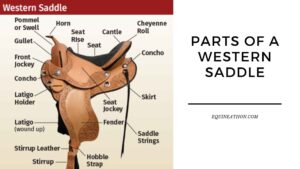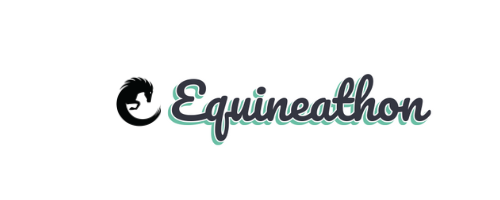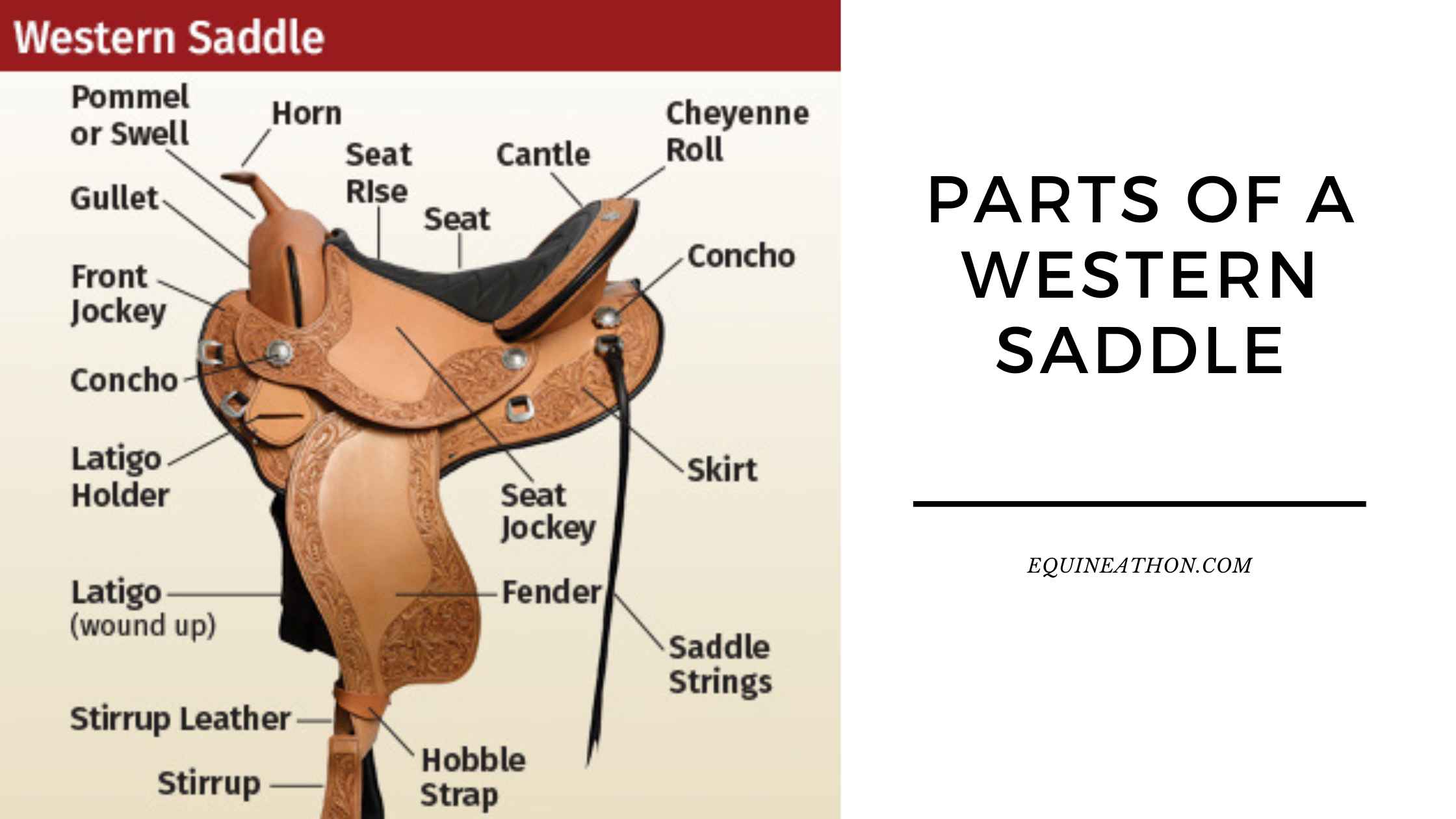[IMAGES] Parts of a Western Saddle
When I first began my equestrian journey, the myriad of parts and terminologies of a saddle baffled me. “Is that the horn or the cantle?” I’d muse. If you’re in the same boat, fret not! I’ve spent years getting intimately acquainted with my western saddle, and I’d love to share that knowledge with you. Understanding each part is essential, not just for the sake of knowledge but for the safety, functionality, and comfort it brings to every ride.
The western saddle, a symbol of the cowboy era, is distinct from its English counterpart. At its core, it’s designed for long hours of riding over rugged terrains. To answer the burning question: the western saddle comprises several components, each serving a unique purpose. Let’s break it down, shall we?
1. Tree: The foundation of the saddle. It’s the frame upon which the saddle is built, often made from wood or a modern composite material. The tree determines the saddle’s overall size, shape, and durability.
2. Seat: This is where the rider sits. In western saddles, the seat is typically deep, providing more stability and comfort during those long rides.
3. Pommel (or Swell): The raised front part of the saddle. It offers security to the rider, preventing them from sliding forward.
4. Horn: Situated atop the pommel, the horn is a distinct feature of western saddles. Historically, it was used for roping cattle. Today, it’s handy for holding onto, especially during quick maneuvers.
5. Cantle: The raised back part of the saddle. It gives the rider’s back support and prevents them from sliding backward.
6. Fender: This piece hangs down from the tree, holding the stirrup. It also protects the rider’s legs from the horse’s sweat.
7. Stirrup: Footrests that assist in mounting and dismounting. They play a pivotal role in balancing the rider.
8. Skirt: The large, usually rounded, piece of leather that’s underneath the main body of the saddle. It protects the horse from the tree and other hardware, ensuring an even distribution of the rider’s weight.
9. Gullet: It’s the channel underneath the saddle that runs from the pommel to the cantle. This design ensures there’s no pressure directly on the horse’s spine.
10. Rigging: This refers to the rings, plates, and hardware used to attach the cinch (or girth) to the saddle. The cinch goes around the horse’s belly, keeping the saddle securely in place.
11. Conchos: Decorative metal discs often found on western saddles. Apart from being aesthetically pleasing, they sometimes hold the leather straps in place.
ALSO SEE: Parts of a Saddle
In my years of riding, understanding the parts of my western saddle has significantly enriched my riding experience. It’s like understanding a close companion better, knowing its quirks, strengths, and the purposes of its unique features.
When you know your saddle, you don’t just ride; you form a bond with an age-old design that’s stood the test of time. Happy riding!

FAQs about the Parts of a Western Saddle
1. Q: What is the main foundation of a western saddle called? A: The main foundation of a western saddle is called the tree.
2. Q: Why is the seat of a western saddle typically deep? A: The seat is deep to provide more stability and comfort during long rides.
3. Q: What is the purpose of the pommel in a western saddle? A: The pommel, or swell, offers security, preventing riders from sliding forward.
4. Q: How is the horn of a western saddle typically used? A: Historically used for roping cattle, the horn is also useful for riders to hold onto during quick maneuvers.
5. Q: Why is the cantle of a western saddle raised? A: The cantle is raised to provide support to the rider’s back and prevent them from sliding backward.
6. Q: What role do the fenders play in a western saddle? A: Fenders hold the stirrup and also protect the rider’s legs from the horse’s sweat.
7. Q: What is the gullet’s function in a western saddle? A: The gullet provides a channel under the saddle, ensuring no pressure is directly applied to the horse’s spine.
8. Q: Why are conchos used in western saddles? A: Conchos are decorative metal discs that can also sometimes secure leather straps in place.
9. Q: What is the purpose of the rigging in a western saddle? A: The rigging involves rings and hardware used to attach the cinch, keeping the saddle securely in place.
10. Q: Are western saddles designed for a specific type of riding? A: Yes, they are designed primarily for long hours of riding over rugged terrains, offering comfort and stability.
11. Q: Why is understanding the parts of the saddle essential for riding? A: Understanding each part ensures safety, functionality, and comfort during every ride.
12. Q: Is the skirt necessary for the comfort of the horse? A: Yes, the skirt protects the horse from the saddle tree and ensures even weight distribution.
13. Q: Does the design of the western saddle have historical significance? A: Absolutely, the western saddle is emblematic of the cowboy era and was designed for practical uses in that period, such as cattle roping.
14. Q: Can the stirrups of a western saddle be adjusted? A: Yes, stirrups can generally be adjusted to accommodate the rider’s leg length for comfort and balance.
15. Q: Does the western saddle offer more stability compared to other saddle types? A: Due to its deep seat and high cantle, the western saddle is often considered to provide superior stability, especially in rugged terrains.
16. Q: What materials are commonly used to make the tree of a western saddle? A: The tree is commonly made from wood or modern composite materials.
17. Q: What part of the western saddle supports the rider’s foot? A: The stirrup supports the rider’s foot and assists in mounting and dismounting.
18. Q: How does the rigging affect the stability of the saddle on the horse? A: The rigging involves hardware that attaches the cinch or girth to the saddle, securing it on the horse and providing stability.
19. Q: Can western saddles be used for various equestrian disciplines? A: While primarily designed for western riding, western saddles can be used in various disciplines but may not be suitable for specific English riding events.
20. Q: Are all western saddles equipped with a horn? A: Yes, the horn is a distinctive feature of western saddles.

